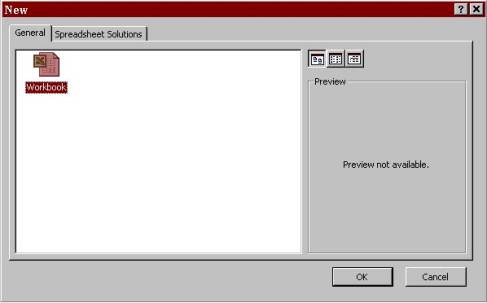| 5.0 SPREAD SHEET PACKAGE | ||
5.2 Opening worksheets and moving around5.2.1
Opening a worksheet Lets open an existing file and re-save
it with some other name. The steps involved to open the existing worksheet is:
Save the existing worksheet with a new
name The practice worksheet HOUSE that you
have created should be preserved in its original shape. Therefore, it is suggested that
you create a copy of it and whenever required do changes in this copy. Thus we will create
a copy of the file by saving it by some other name. Take up the steps listed below: 1. On the file menu click on save as. 2. The save as dialog box appears. In this
box provide a new name and the path same, lets save his file as C:\EXCEL\SALES. 3. Click on the save button or press Enter
key. So a duplicate worksheet by the name SALES is now available for you to practise. 5.2.2
Moving around in a worksheet As mentioned in previous pages, a
worksheet is made up of Columns and Rows. Columns run vertically and rows Horizontally.
Columns are identified by letters across the top where as rows are identified by the
numbers down the left side. The intersection
of a row and column is called as a cell. Cells are named by positions in the rows and
columns. The combination of column letter and row number is called cell reference e.g. the
cell column A and row 1 is called A1. The cell one column to the right is called B1. The
cell one row down from A1 is A2 and so on. Take a note that when you select a cell
with the mouse or with the arrow keys, that cell becomes the active cell. When you make a
cell active, you can type new data into it or edit the data it contains. The active cell
has a dark border around it. You can always determine the reference for the active cell by
looking in the Name box on the formula bar. In order to change the active cell
simply click a new cell by the mouse r use arrow key on your keyboard. Steps to select cells in a worksheet Lets open a new fresh worksheet and try
to move in the worksheet by selecting different combinations of arrow keys. Select New
option from File menu. A dialog box appears (see the figure)
With the workbook option selected click
on the OK button. New workbook is now open. Okay, now we can move around the
worksheet. Select a specific cell, say A1.
5.2.3
Selecting a Data Range A data range is a set of multiple
cells. You can select multiple cells in one go by pressing and holding down either SHIFT
or CONTROL key while you press the mouse button. In order to select several adjacent
cells, click the first cell in the set, press and hold down SHIFT and then click the last
cell in the set. Alternatively you can use the mouse only. Click the first cell in the set
and drag to the last cell. When you select more than one adjacent
cell, you are selecting a range of cells. In order to select several nonadjacent cells,
click the first cell, then press and hold down CTR and click the next cell that you want. 5.2.3.1
Steps to select multiple cells in a worksheet Lets try to select some multiple cells
using SHIFT and CTRL keys.
| ||
|
Copyright © 2001 Selfonline-Education. All rights reserved. |
||
| |
||

